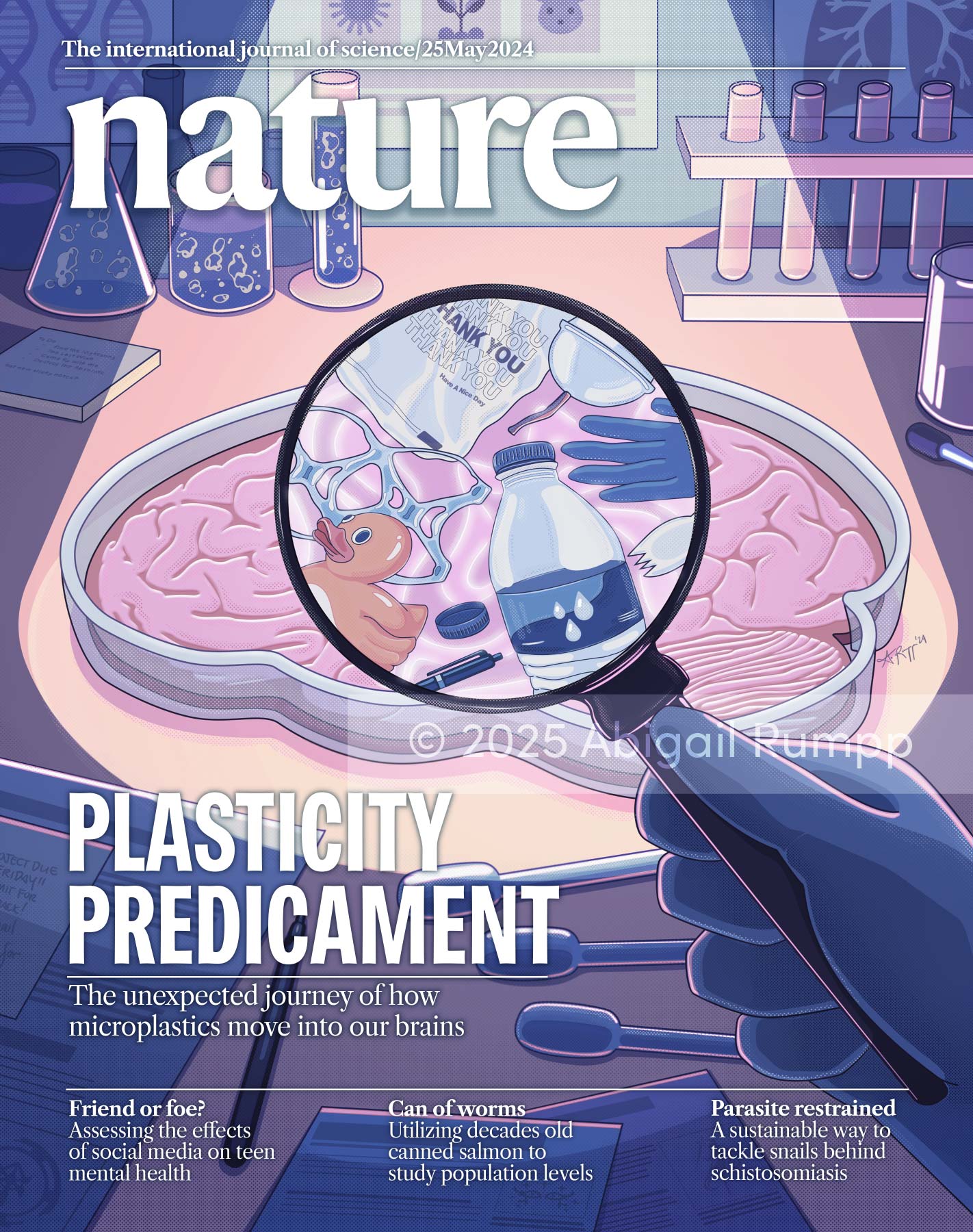Plasticity Predicament
Year
2024
Content Expert
Jeni Fairman, MA, MPS, CMI, FAMI
Tim Phelps, MS
Medium
Adobe Illustrator
About
This editorial illustration explores the emerging concern of microplastics migrating from the gut and accumulating in major organs—most notably, the brain. Inspired by the 2024 Environmental Health Perspectives article, “In Vivo Tissue Distribution of Polystyrene or Mixed Polymer Microspheres in Mice” (Garcia et al., 2024), the image uses visual metaphor to reveal the often-invisible impact of environmental plastic exposure on human health.
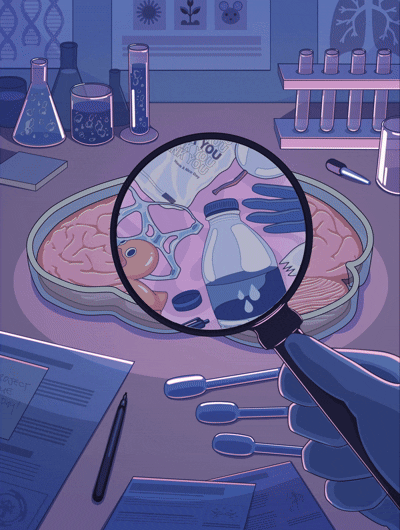
Microplastics from our environment can end up ingested or inhaled by both animals and humans. These microplastics can then accumulate in major organ systems, like our brains.
Background
Global plastic usage has grown exponentially in the past century, leading to a substantial accumulation of plastic in the environment. These plastics can then degrade into microplastics, tiny plastic particles that can be inhaled or ingested by both humans and animals. A growing body of evidence indicates that these microplastics can cross the gut barrier, enter the lymphatic and circulatory system, and ultimately accumulate in tissues like the lungs, liver, and brain. There is little research on how microplastic accumulation affects health outcomes.
According to Garcia et al., in a study using mice that were fed microplastics, researchers detected polystyrene microspheres in distant tissues, including the brain, liver, and kidneys (2024). Metabolic differences were also observed, with differences dependent on the concentration of plastic.
Marcus M. Garcia, Aaron S. Romero, Seth D. Merkley, et al. (2024). In Vivo Tissue Distribution of Polystyrene or Mixed Polymer Microspheres and Metabolomic Analysis after Oral Exposure in Mice. Environmental Health Perspectives 132:4 https://doi.org/10.1289/EHP13435.
Creating the Illustration
This illustration was created for the editorial course in my graduate program. The assignment began with selecting a recently published article and developing an image that captured its core message. We were encouraged to challenge ourselves by incorporating visual metaphors, being clever with the visual storytelling, and considering what would make an ideal journal cover.
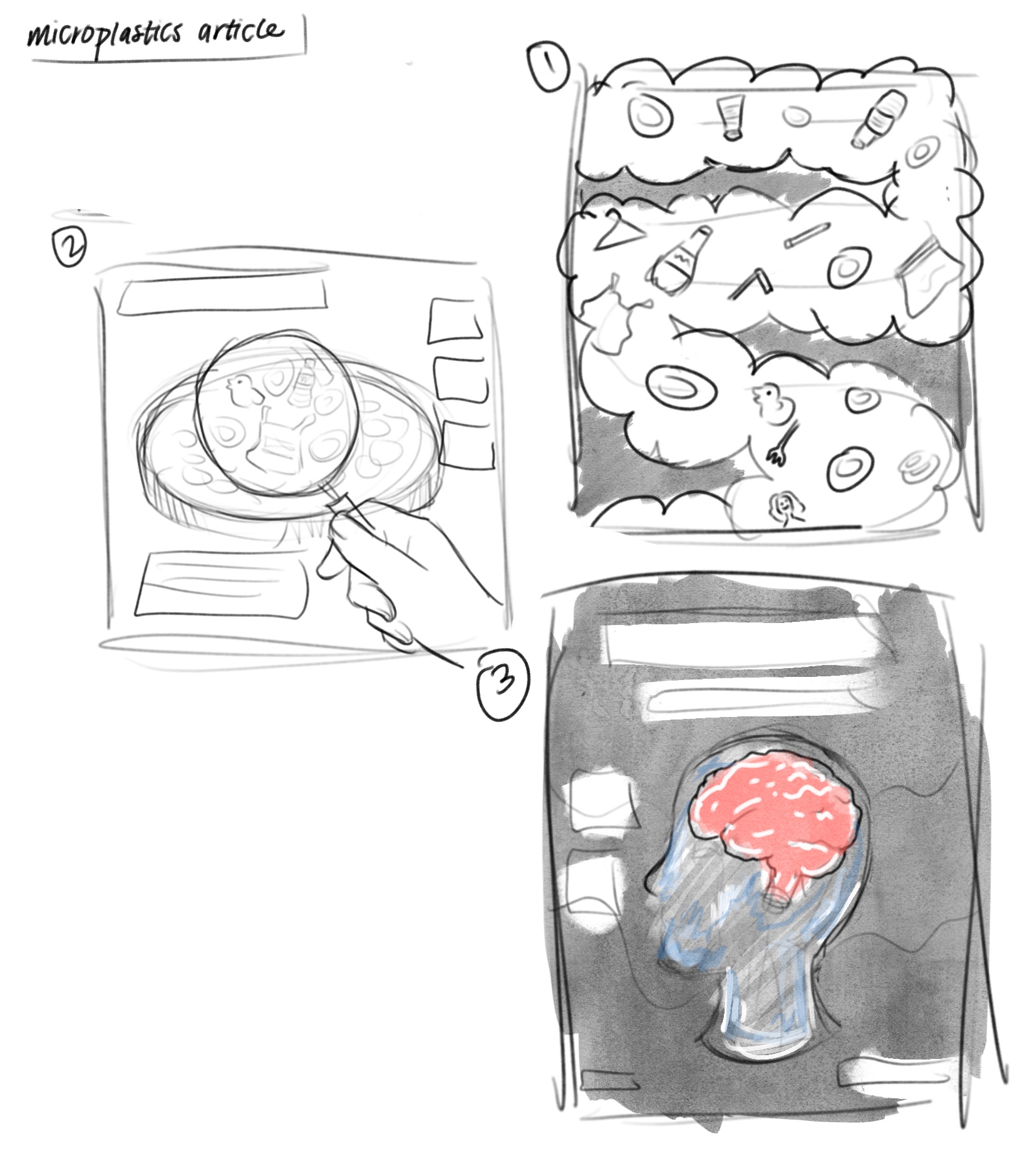
First set of thumbnails. In Vivo Tissue Distribution of Polystyrene or Mixed Polymer Microspheres and Metabolomic Analysis after Oral Exposure in Mice (Garcia et al. 2024).
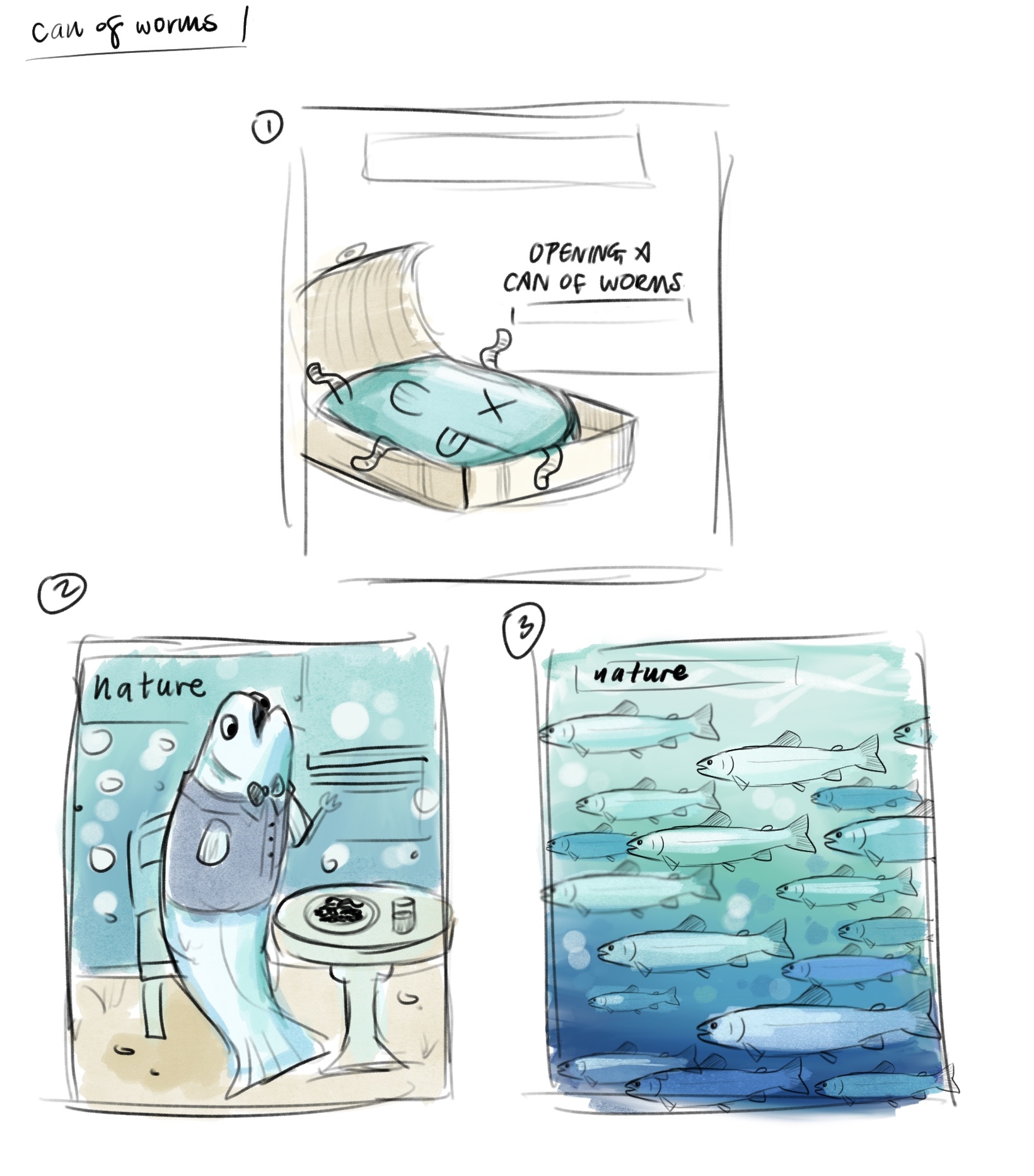
Second set of thumbnails. Opening a can of worms: Archived canned fish fillets reveal 40 years of change in parasite burden for four Alaskan salmon species (Mastick et al. 2024).
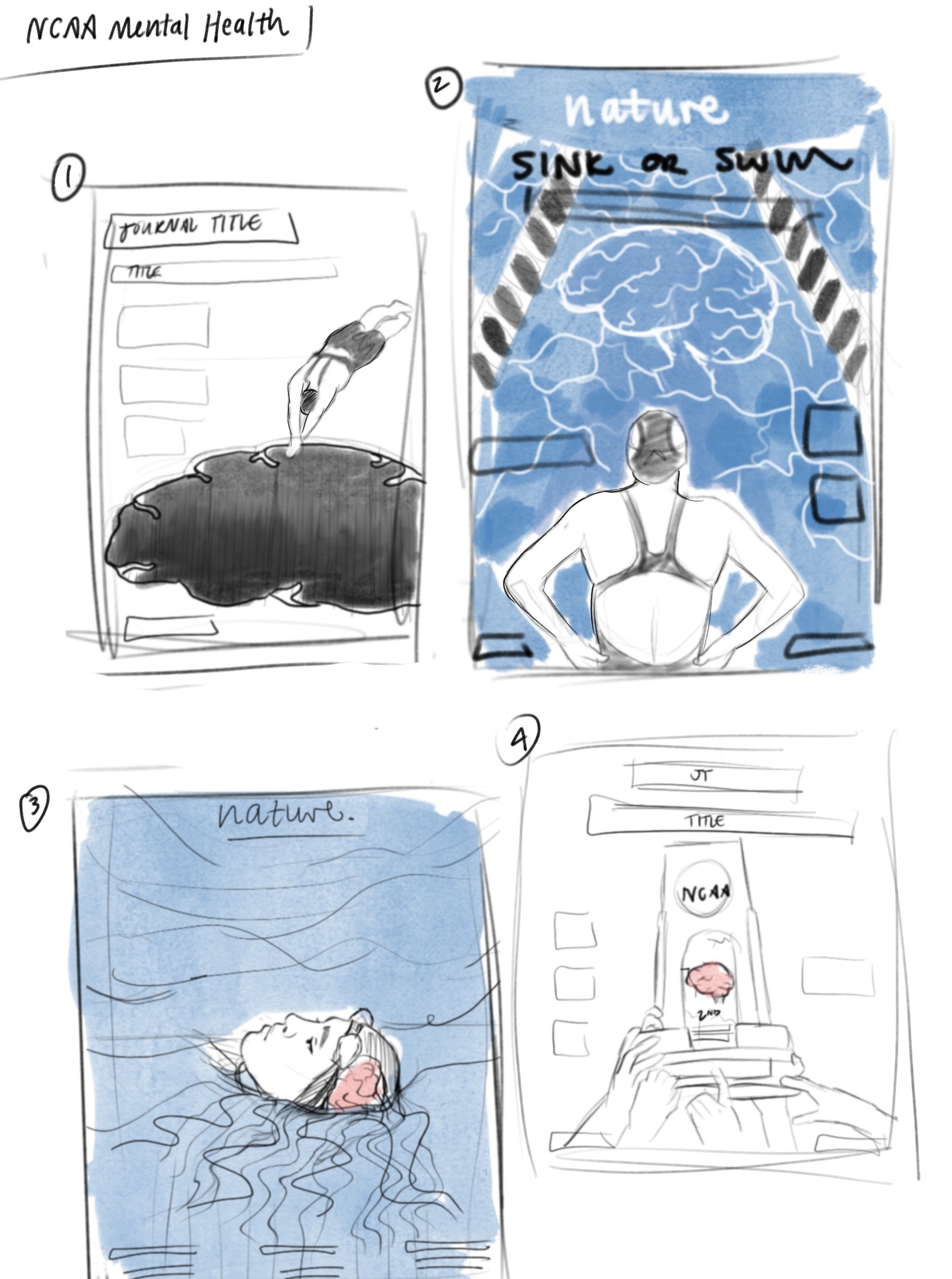
Third set of thumbnails. Suicide in National Collegiate Athletic Association athletes: a 20-year analysis (Whelan et al. 2024).
DOI: 10.1136/bjsports-2023-107509
After receiving initial feedback, we decided to move forward with the first set of thumbnails. I then began refining the sketch to plan out the final illustration.
I built the illustration around the story of a scientist investigating an agar plate shaped like a brain; it felt like the perfect way to tie together the article’s insights while keeping the image visually compelling. Since the piece focuses on microplastics in the brain, I wanted to represent that idea using familiar, everyday plastic objects to show the presence of microplastics. I think it helps make the concept more approachable for the viewer, something they can recognize and relate to, rather than just imagine.
I knew from the start that I wanted to create this illustration in Adobe Illustrator. At the time, I wasn’t completely comfortable with the program, so I saw it as a chance to challenge myself by completing the entire piece with it.
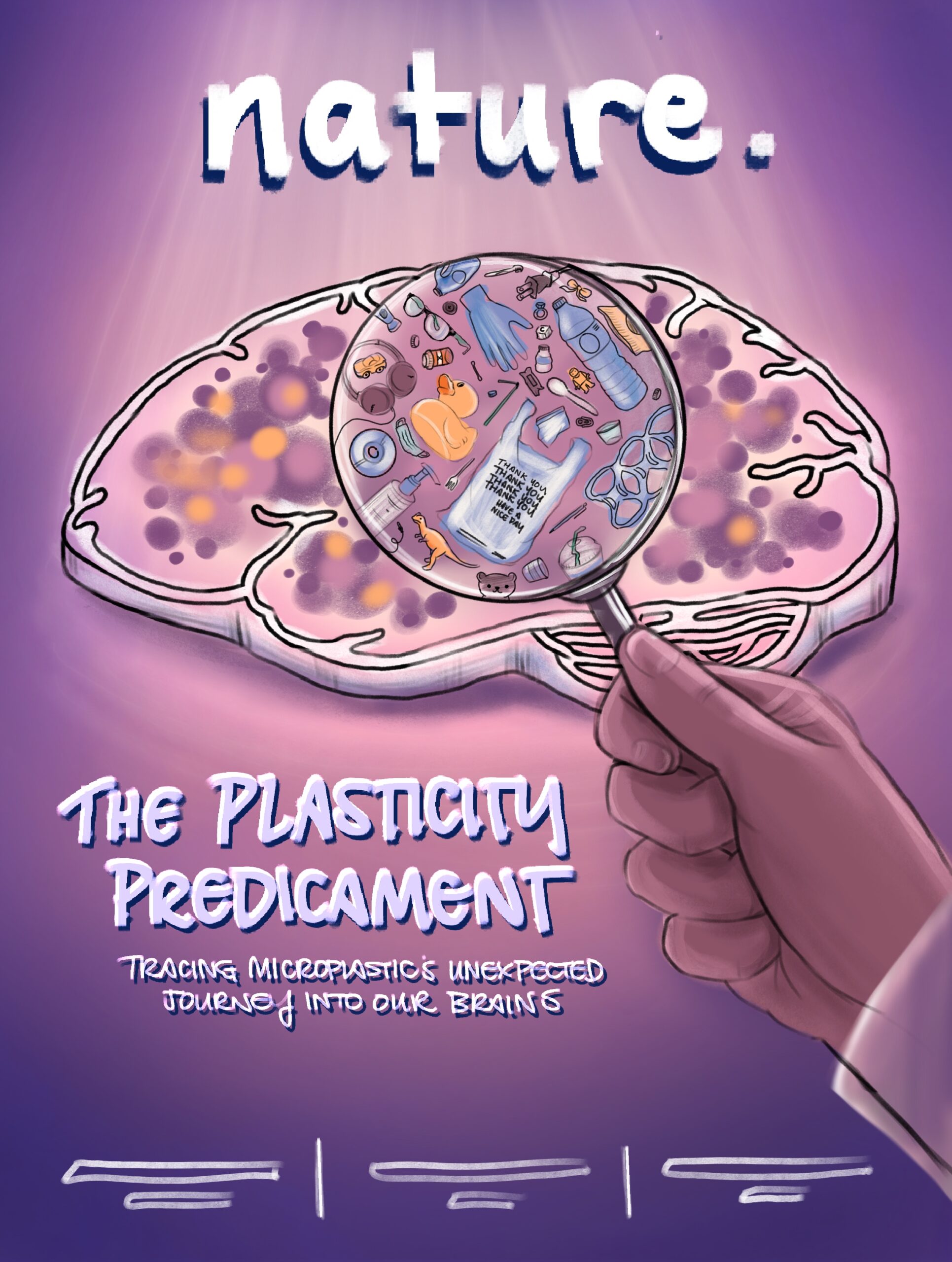
Refined thumbnail sketch.
I titled this piece Plasticity Predicament as a play on the concept of brain plasticity and the emerging reality of plastic accumulating in the brain. “Plasticity” refers to the brain’s ability to adapt and change, but here, it also nods to the literal presence of microplastics, highlighting the contrast between adaptability and environmental contamination.
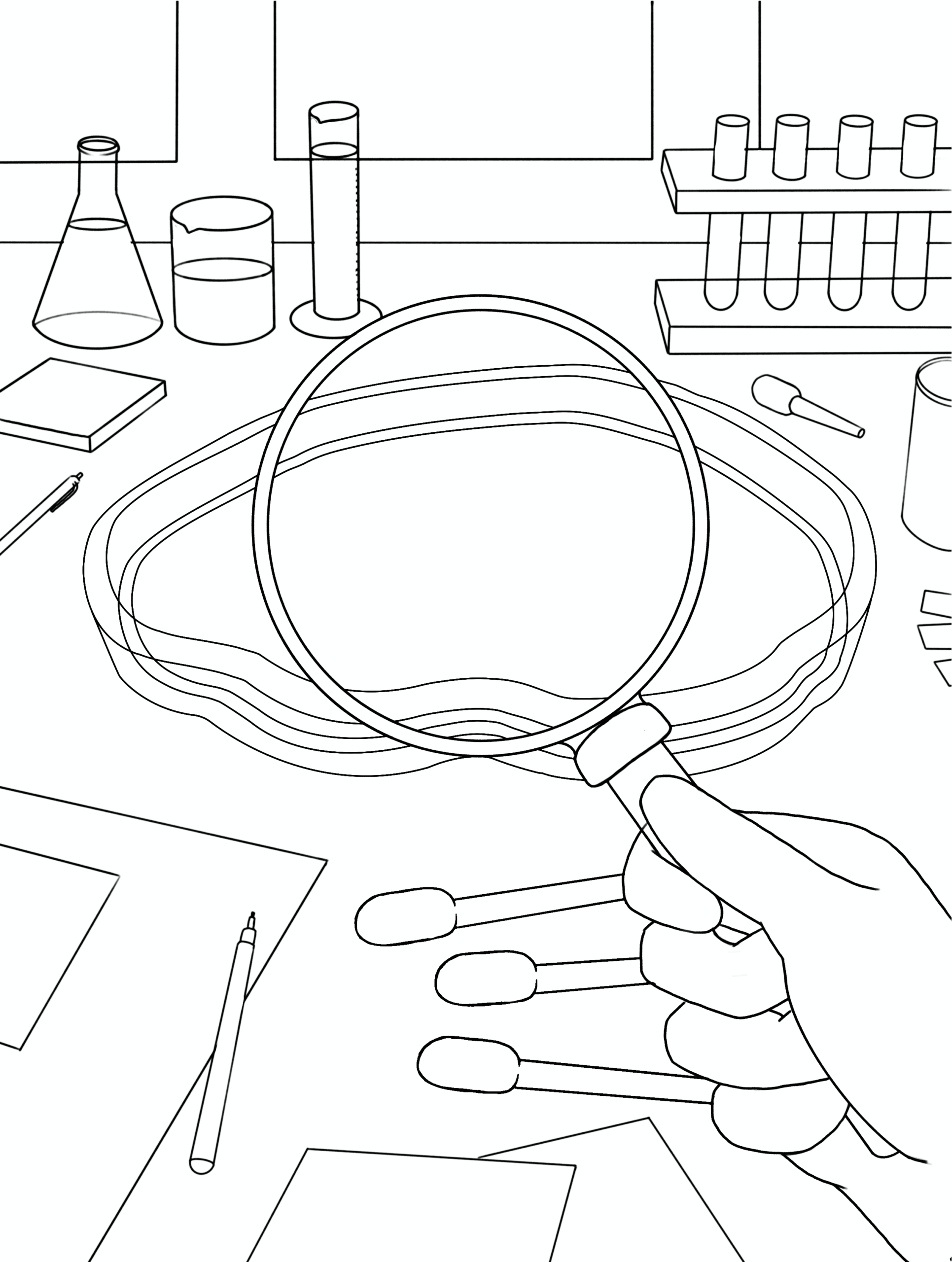
Final linework for the illustration.
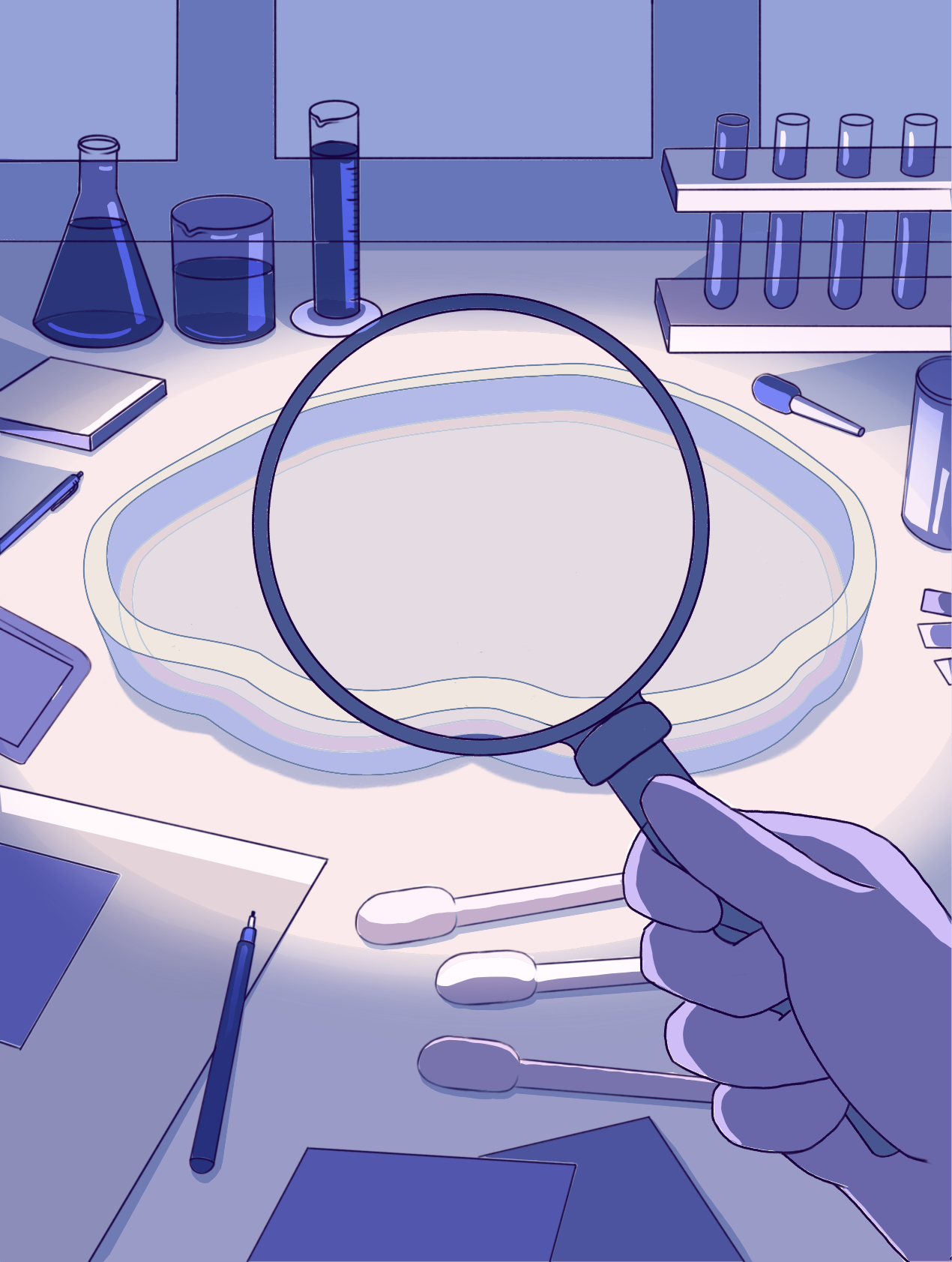
Draft planning the color and value.
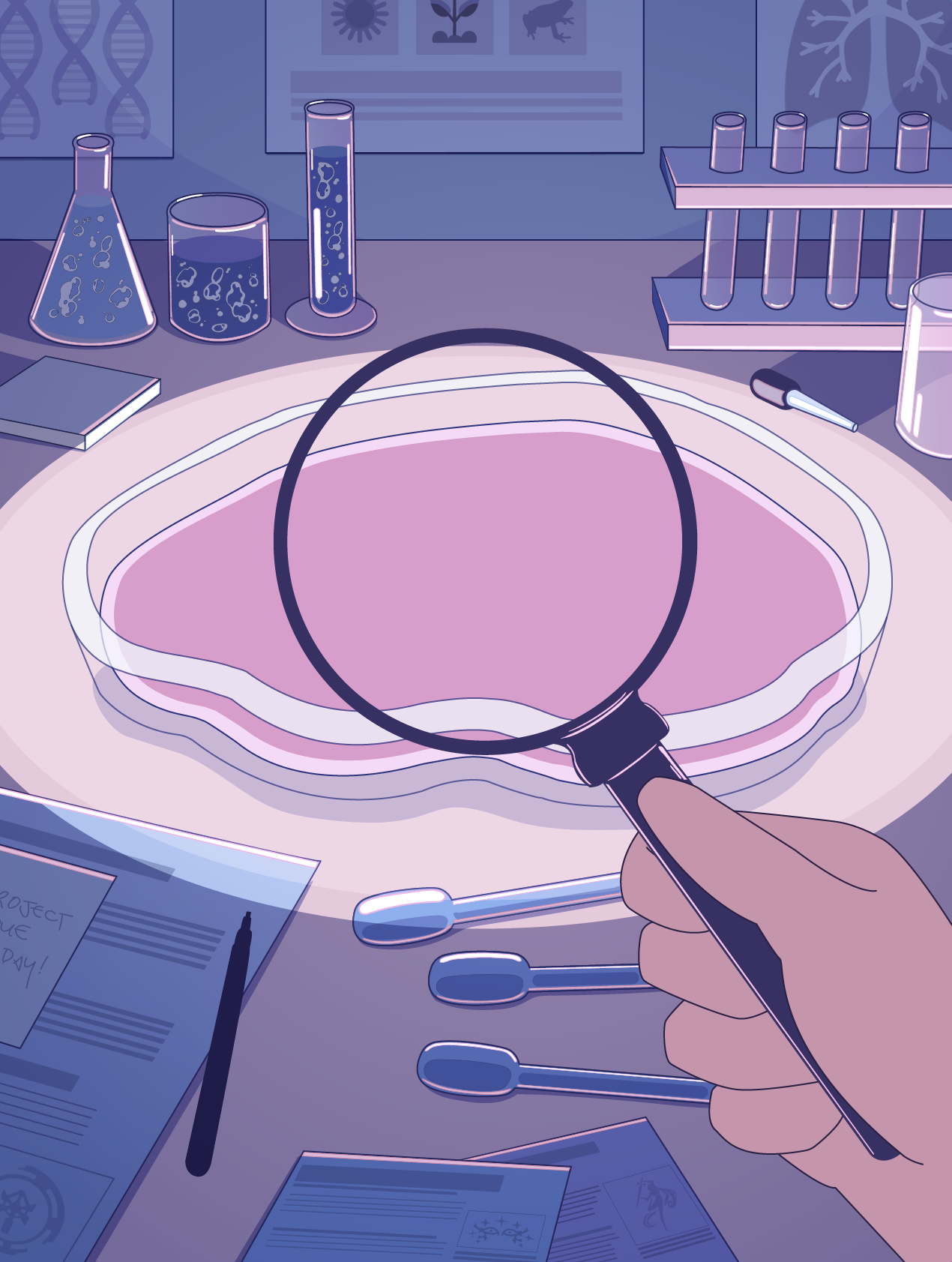
Work in progress screenshot.

